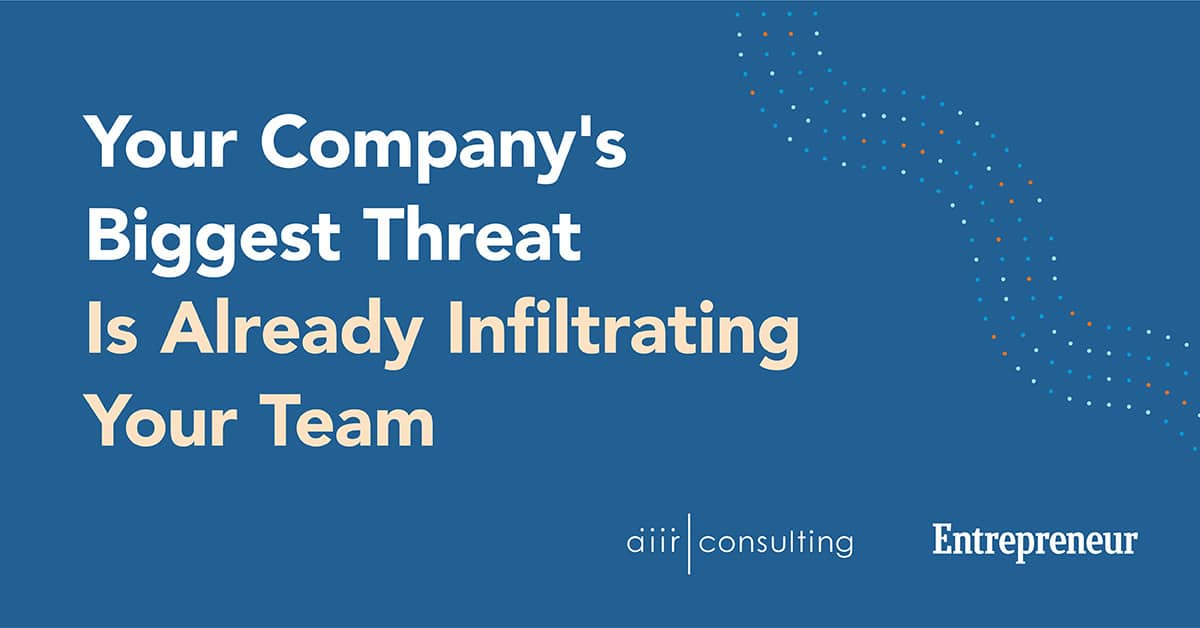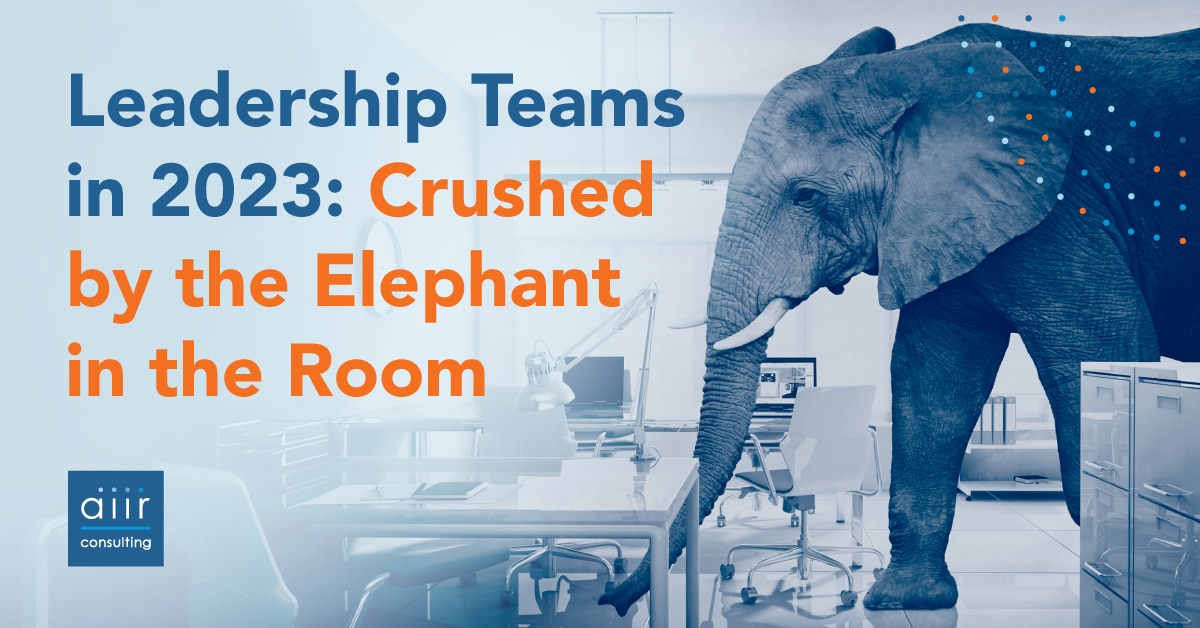
The Biggest Threat to Your Company’s Future Is Already in the Building
By AIIR Consulting | May 3, 2023
Amid Rapid Change and Economic Uncertainty, it’s Easy to Focus on External Threats. But the Real Threat May Already be Infiltrating Your Team
This article originally appeared in Entrepreneur.
Most leaders spend their time focused on the external challenges their companies face. And, from rapid advances in technology to financial uncertainty, geopolitical instability and competition, there are plenty. But what if the greatest threat to the future of your company is already inside the building?
Companies need an engaged workforce to stay competitive in a complex and continually changing environment. But the countless hours we’ve spent coaching and consulting with executives has made it clear that companies across industries are dealing with low morale and, consequently, low employee engagement.
The latest polling shows that just over 30% of US employees are engaged. That low engagement is contributing to high turnover. Last year, the voluntary quit rate was 25% higher than it had been before the pandemic, and 40% of workers are considering leaving their job this year. And turnover is contagious — one study showed 92% said they’d be less likely to stay in their job after a close colleague quits. That kind of cascade can hollow out your company quickly.
How can you improve morale, inspire your workforce and increase engagement at your organization? Here are four tips.
1. Make Sure You’re Measuring Engagement
First, you can’t fix something you don’t know is broken. The way we work now has made it harder than ever to sense when something is. It was easier to perceive when engagement and morale were low when we were all in the office. It hung over the office like a fog. But when you only see your peers and employees on a computer screen, it can be hard to tell when something is wrong. That’s why every company should be measuring morale and engagement at regular intervals.
Sending these surveys and synthesizing the data they return requires an investment of time and effort, two resources that are always in short supply. But the investment returns huge value by enabling leaders to understand the overall health of the organization, to see what you are doing well and figure out what you can do better.
2. Co-Create Your Company’s Values
Amid stress and uncertainty, employees benefit from a clear understanding of the vision and values of the organization. They also benefit from a vision and values that align with their own — studies show employees whose personal values align with the values of their organization are more likely to be engaged and less likely to quit — which is why there is a tremendous benefit to creating vision and values collaboratively.
Imagine starting with a blank canvas, then be thoughtful and purposeful about the future you want to create. By listening to the needs of your people and paying close attention to context, you can identify a set of values that energize your team. You may try things that fail, but the messiness of intentional experimentation is mitigated by clear and open dialogue, your willingness to learn and your ability to adapt.
3. Connect With Your People
As leaders, we ask our employees to spend the majority of their waking hours at work. In return, we have to make sure we show them that their time at work matters. A Gartner study showed that 82% of employees say it’s important for their organization to see them as a person, not just an employee. However, just 45% of employees believe their organization actually sees them this way. That’s probably because just 27% of organizations “guide supervisors to have conversations with their teams about why their work matters.”
Combatting this disconnect starts with you and your executive team. There is something powerful about a leader checking in with their team. The most successful leaders I have coached set aside time to check in with each of their teams on a human level, offer gratitude for their work, ask them about the challenges they’re experiencing at work and at home and ask them how they can help.
Leadership teams are struggling under the weight of unresolved conflict
This whitepaper looks at data from hundreds of executive leadership teams to uncover what is causing teams to accumulate conflict debt, and what they can do about it.
4. Double Down on Community
Loneliness has long been a problem in the workplace. But, since the beginning of the pandemic, the problem has become even more pronounced. And that’s a big problem. Loneliness reduces our ability to perform tasks, limits creativity and reduces reasoning and decision-making. Socially isolated team members are less likely to collaborate with others, and research shows that their colleagues are likely to perceive them as unapproachable and uncommitted to the organization.
It’s hard for your team to feel like they’re in this together when most of them have never been in the same room. More than 30% of the U.S. workforce has changed jobs since the pandemic necessitated a mass movement to remote and hybrid work. At some of our enterprise clients, there are entire teams of individuals who have never met one another in person.
While I recognize the expense of bringing people together, the value of in-person interaction is impossible to overstate. Studies show that in-person interactions trigger the release of oxytocin and build trust and psychological safety between individuals. Google’s two-year study of its teams showed that psychological safety was the single most important factor impacting performance. Individuals on teams with higher psychological safety were more engaged and less likely to leave the company.
More Than a Feeling
Improving engagement at your company won’t be easy — 36% is the highest portion of the U.S. workforce that has been engaged at work in the past 20 years. However, your effort will be rewarded. Engaged employees are not only less likely to turnover, but they also deliver higher sales, more satisfied customers, greater productivity and higher profits than their less engaged colleagues.
Are You Ready To Shape A Better Future Together?
Partner with AIIR to empower your leaders and ascend into the future.
